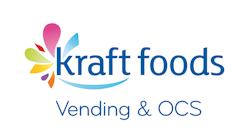Kraft Foods’ CEO Irene Rosenfeld Defends Splitting Grocery And Snack Businesses
During a presentation at the Barclays Capital Back-to-School Consumer Conference today, Kraft Foods Chairman and CEO Irene Rosenfeld outlined the key drivers and benefits of the decision to launch two independent public companies before year-end 2012. Kraft Foods announced its plan to create a high-margin North American grocery company and a high-growth global snacks company when it reported strong first half financial results on Aug. 4, 2011.
"Over the past four years, we've fundamentally changed the face, footprint and prospects of Kraft Foods," said Rosenfeld in a prepared statement. "We've successfully positioned our company to deliver sustainable top-tier growth by reinvigorating our iconic brands, transforming our portfolio and strengthening our presence in fast-growing developing markets. But taking our performance to the next level requires a bold new approach: creating two great companies that can optimize value by focusing on their unique drivers of success."
With annual revenues of approximately $16 billion and market-leading positions in about 80 percent of its categories, the North American Grocery business will be one of the largest and most-admired food companies in North America. This business will include four "billion-dollar" brands, including Kraft, Maxwell House, Oscar Mayerand Philadelphia, plus three more with revenues of at least $500 million, and an additional 14 with annual revenues of more than $100 million.
As an independent company, the North American Grocery business will continue to draw on great marketing, innovation and significant scale in the grocery sales channel to deliver revenue growth in line with its categories. It will target industry-leading margins through disciplined portfolio management, optimized trade spending, Lean Six Sigma manufacturing initiatives and negative overhead growth.
The economic returns of the North American Grocery business will come from sustained growth of its high-margin iconic brands, capital efficiency and the return of free cash flow in the form of a highly competitive dividend payout and a growing dividend over time.
The global snacks business will have annual revenues of approximately $32 billion and a strong growth profile in the top tier of its global peer group. It will rank among the leading consumer packaged goods companies in the world, with one of the most desirable exposures in emerging markets among large-cap CPG players. The company will derive more than 42 percent of its sales from Developing Markets, 36 percent from Western Europe and 22 percent from North America.
Approximately 75 percent of revenues will come from snacks, and this company will be the pre-eminent player in snacking worldwide, with leading market shares in each major region of the world. The business will have a powerful brand portfolio featuring eight "billion-dollar" brands, including Cadbury, Jacobs, LU, Milka, Nabisco, Oreo, Tang and Trident. Its portfolio will include six additional brands with revenues of more than $500 million, and nearly 40 more brands with over $100 million in sales.
Global Snacks will focus on industry-leading growth by extending its global product platforms, taking advantage of its significant scale in emerging markets, expanding in instant consumption channels and aggressively entering white-space markets. This business will drive margins higher by leveraging its cost structure through volume growth and improved product mix. Global Snacks will redeploy capital to support future growth through investments in sales, distribution and manufacturing.
"I'm confident this is the best way to stage our businesses for long-term success, the best way for shareholders to value each business and the best way to ensure a bright future for our people," Rosenfeld concluded.
Until the new companies are created late in 2012, Kraft Foods will continue to report as one company and focus on delivering on its goals for 2011 and 2012. Financial guidance for the new companies will be provided next year after the work of establishing separate financial reports and capital structures is completed. Tax rulings from the Internal Revenue Service are expected early in the second quarter of 2012, and the company expects to file an initial Form 10 shortly after that.
Kraft Foods' presentation was accompanied by slides.






